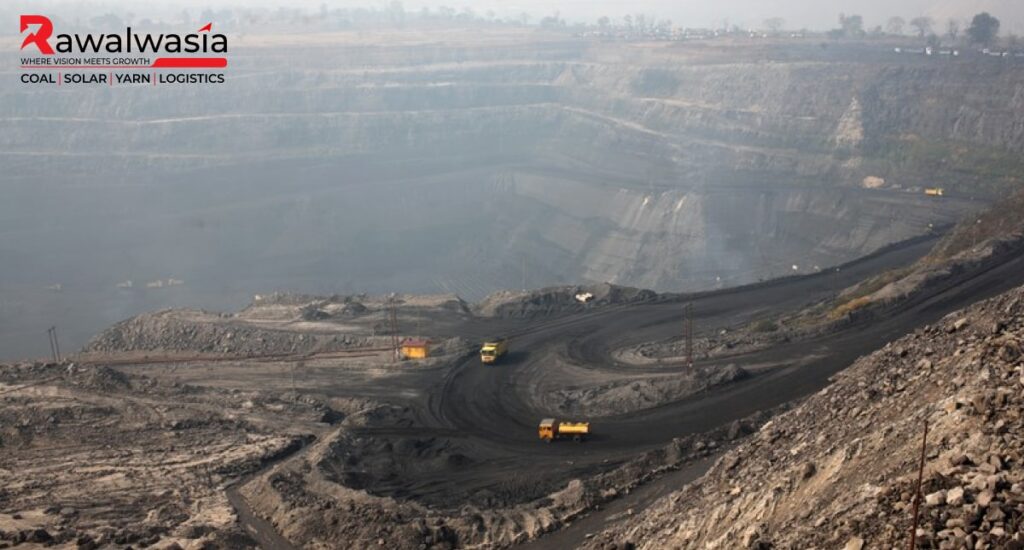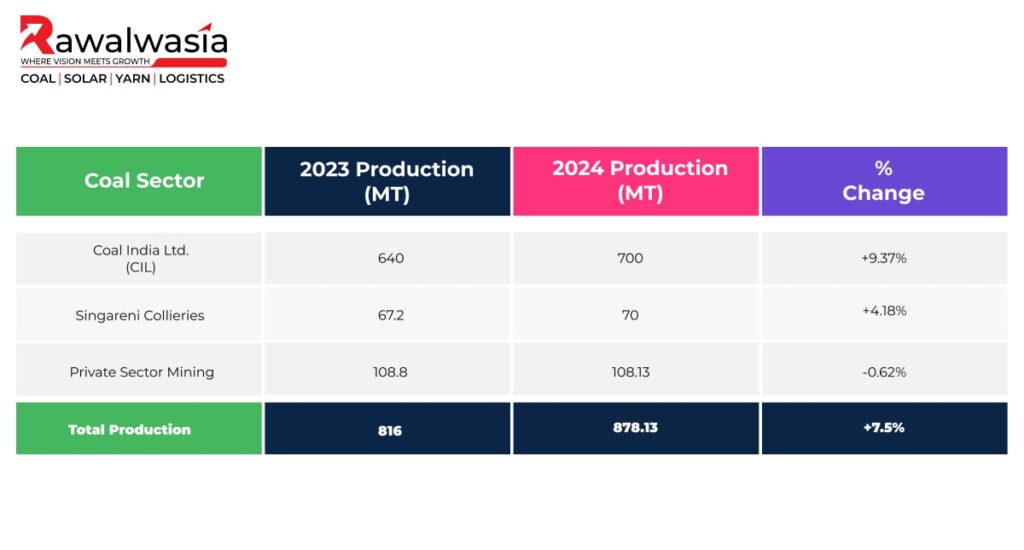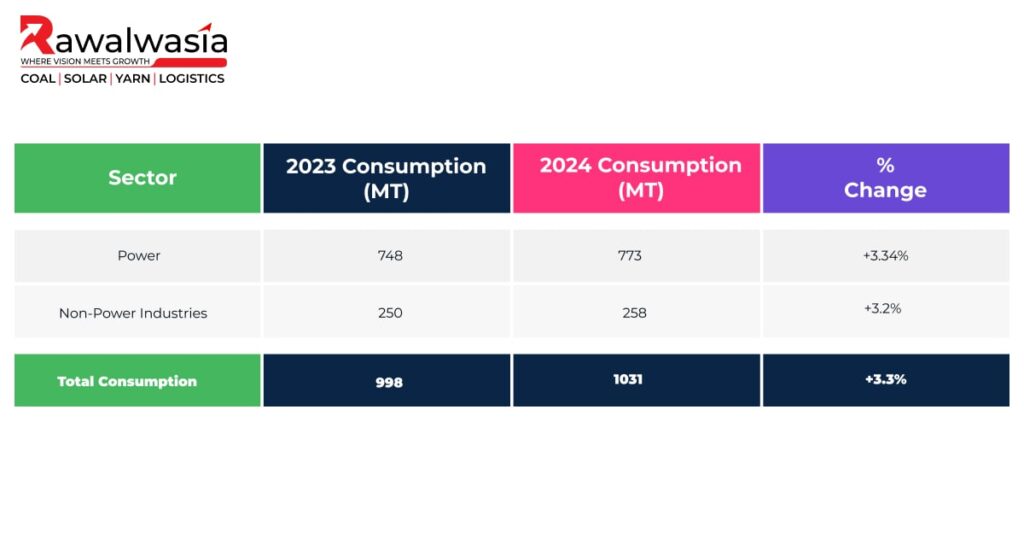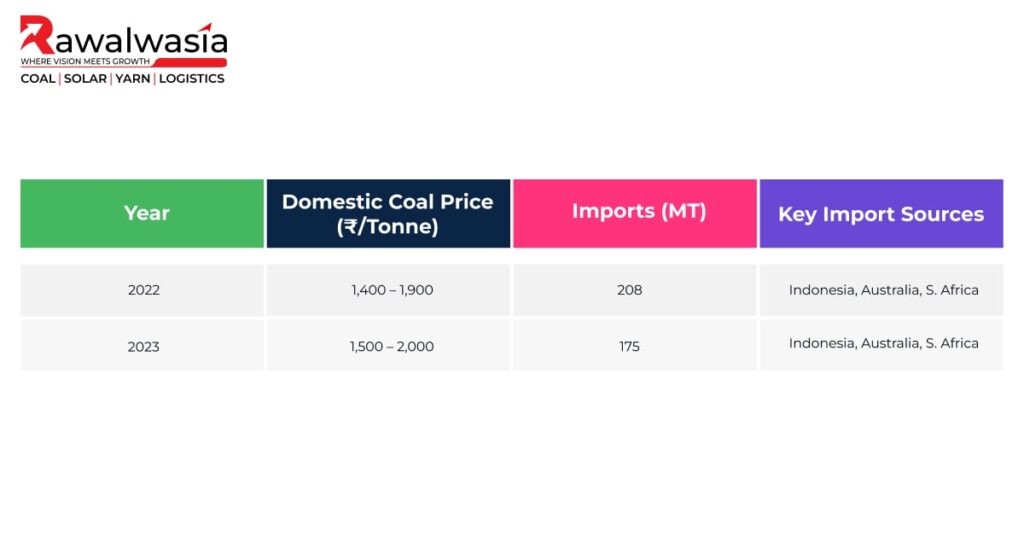Introduction

Indian coal plays a crucial role in the country’s energy landscape, providing nearly 70% of the nation’s electricity generation. In 2024, the Indian coal sector will continue expanding its production, demand, and consumption, driven by the growing energy needs of industries and households. This article delves into the latest data and trends in the Indian coal sector as of 2024, covering production, consumption, supply, pricing, and policy reforms while also exploring the contributions of key players such as Rawalwasia Group.
Indian Coal: Production and Supply in 2024
As of 2024, India remains the world’s second-largest coal producer after China. Coal production has increased steadily, supported by government initiatives to boost domestic output and reduce dependence on imports. According to the Ministry of Coal, India produced 878.13 million tonnes (MT) of coal in the fiscal year 2023-24, representing a 7.5% increase compared to the previous year’s 816 MT.
Coal India Limited (CIL) continues to dominate the Indian coal market, accounting for approximately 80% of the country’s coal production. In 2024, CIL produced 700 MT of coal, surpassing its production target of 670 MT for the year. Other significant players, such as Singareni Collieries Company Limited (SCCL) and private sector coal miners, also contributed to the overall production growth, with SCCL producing 70 MT of coal in the same period.
India’s coal supply to various sectors remains robust, with the power sector being the largest consumer. As of March 2024, dispatches to power plants increased by 4.03%, totalling 362.65 MT, while dispatches to other industries, including cement, steel, and fertilisers, saw moderate growth.

Source: Ministry of Coal, Government of India
Indian Coal: Demand and Consumption
The demand for Indian coal in 2024 continues to grow due to rising industrial activity and energy needs. Domestic coal consumption has been pegged at 1031 MT for FY 2023-24, an increase from 998 MT in FY 2022-23. The power sector consumes approximately 75% of total coal, with the remaining 25% going to non-power industries such as steel, cement, and fertilisers.
With the government focusing on renewable energy growth, coal plays a key transitional role in meeting India’s energy demands. The National Thermal Power Corporation (NTPC) remains the largest coal consumer, followed by independent power producers (IPPs) and captive power plants. Coal imports have decreased due to increased domestic production, but coking coal imports for steel manufacturing remain high.

Source: Central Electricity Authority (CEA)
Indian Coal: Pricing and Imports in 2024
Indian coal prices have remained stable in 2024 despite fluctuations in global energy markets. The government has maintained a regulated pricing system for domestic coal to ensure affordability for key sectors, particularly power generation. As of early this year, the average notified price for domestic coal is around ₹1,500 to ₹2,000 per tonne, depending on the grade and quality.
Although domestic coal production has increased, India still relies on imports of high-grade coking coal, essential for steel production. India is projected to import 175 MT of coal in 2024, down from 208 MT in 2022, as increased domestic thermal coal production reduces import dependency. Indonesia, Australia, and South Africa are India’s key sources of imported coal.

Source: Coal India Limited, Ministry of Coal
Government Initiatives and Reforms in Indian Coal Sector
The Indian government has introduced several reforms to enhance the coal sector’s productivity, sustainability, and transparency. In 2024, key initiatives include:
- Auctioning of Coal Blocks: The Ministry of Coal has auctioned 42 coal blocks in 2023-24, encouraging private sector participation in coal mining. Over the next five years, this will boost production capacity by 200 MT annually.
- Commercial Coal Mining: The government’s push for commercial coal mining is a game-changer. It allows private companies to mine coal without restrictions on end-use. This policy aims to reduce import dependency and promote self-reliance in coal production.
- Digitalisation and Technology: To improve operational efficiency, the coal sector has adopted digital technologies such as remote sensing, geospatial mapping, and real-time data monitoring.
Conclusion
Indian coal continues to be the backbone of the country’s energy infrastructure in 2024, with production and consumption reaching new heights. As domestic production rises and imports decrease, India moves closer to energy self-sufficiency. Despite challenges in transportation and infrastructure, government reforms and private sector participation are set to improve the industry’s long-term prospects.
The Rawalwasia Group, a leading supplier of Indian coal, is committed to providing a diverse range of coal varieties, including thermal coal, coking coal, and lignite, to meet the growing demands of various industries. With a strong distribution network and adherence to quality standards, Rawalwasia Group plays a pivotal role in fueling India’s energy needs and supporting industrial growth.






